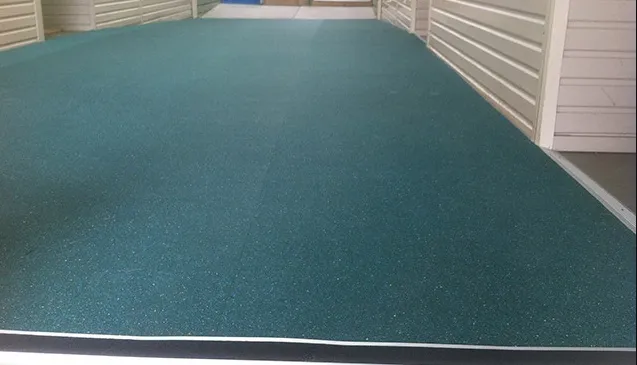Unless you’re a gym junkie or someone who’s spent a lot of time examining the floors in your local fitness centres, you may not know that gym mats come in a variety of different thicknesses and sizes. They are designed based on how they will be used and the level of protection the user is looking for, ensuring they are safe and comfortable throughout their workout. In this guide, we’ve outlined the most common matting on the market, and the exercises they are often used for.
These gym mats are designed to be thick and large – often at least 12mm thick and 1500mm long. These are the ideal all-rounder mats, perfect for floor workouts like core and stretching, as they offer cushioning from the floor. Made from closed cell PVC, they usually come with an easy to clean vinyl cover.
Similar to standard fitness mats, these are used for professional sporting applications, such as gymnastics. For that reason, they are usually between 25mm to 50mm thick, ensuring they can absorb any shock that could cause damage the athletes joints. They’re made from either standard or extra dense foam.
These gym mats are also designed for professional use, providing cushioning for classes such as martial arts and wrestling. As such, they are often over 100mm thick, absorbing shocks and making high intensity training less taxing on the joints.

Unlike other gym mats, these are designed to protect the floor, rather than the athlete. Usually only 5mm thick and 90mm by 2400mm wide, they are placed under exercise equipment – from treadmills to smith machines – to keep the flooring dent and scratch free. They also stop the machinery from moving whilst it’s being used.
Long and thin,these mats offer at least 12mm of firm padding to protect hands and knees. They are made with closed-cell construction and generally made from thermal plastic elastomer (TPE). Whilst their surface isn’t overly sticky, it should offer grip for the users.
Thinner than pilates matting, this style is designed for lower impact exercises. Whilst they can be made from a range of materials, including closed cell PVC, cotton, mesh and rubber, they do need to have enough grip to keep the user stable. Many mats are designed to become ‘stickier’ when they get wet – perfect for hot yoga.
As you can see, when it comes to gym mats, there isn’t a ‘one size fits all’ solution. Think clearly about where you’re planning on using them, and the exercises that will most likely be completed in that area. As the owner of a fitness centre, it’s your responsibility to ensure your premise is kept as safe as possible for all gym-goers, to ensure they can work out correctly and comfortably. If you’re confused about which type of matting will meet your needs, speak with the friendly team at Bardwell – with almost 30 years’ experience, we’re your local matting experts.